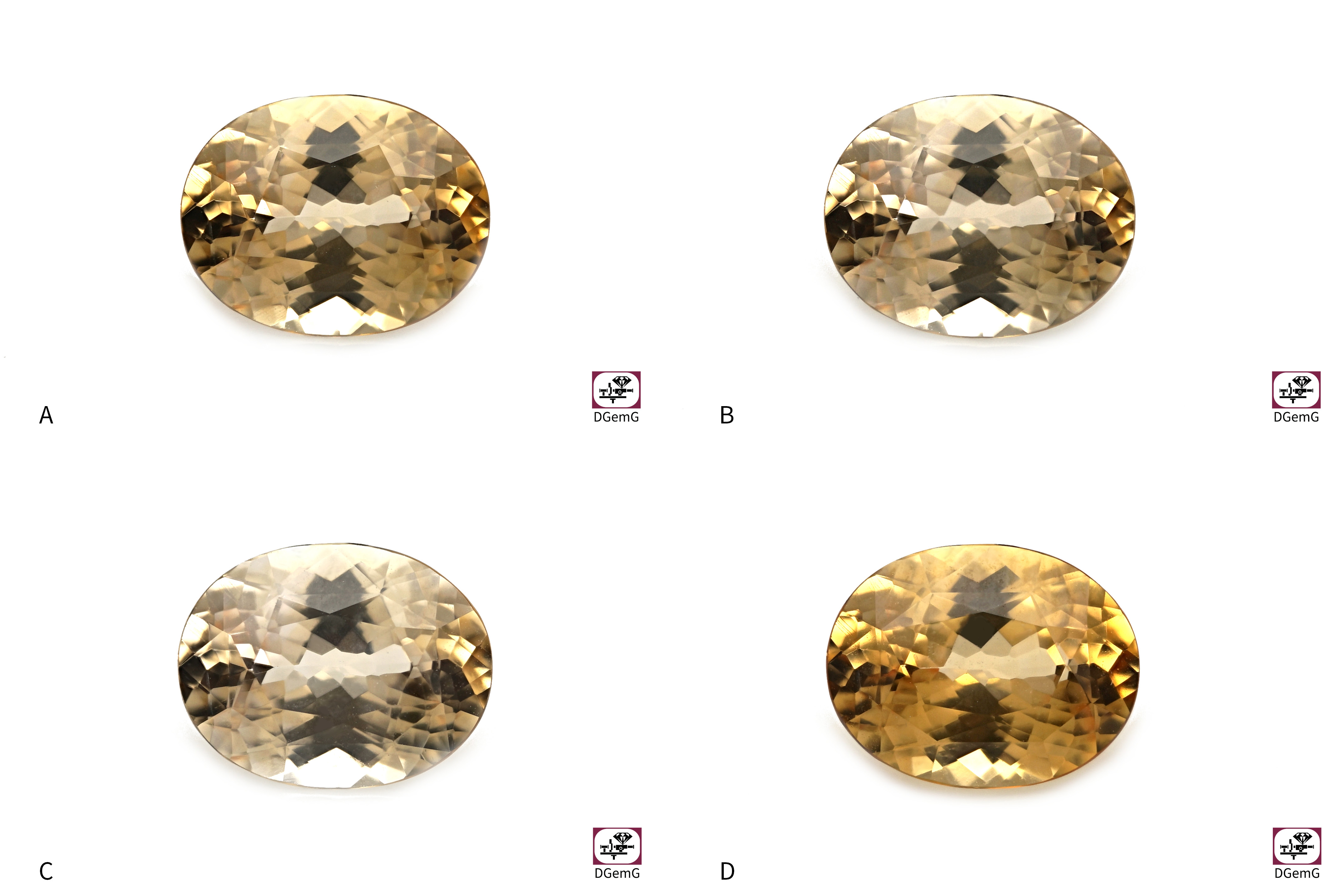 Fig. 1: Yellow sapphire of 4.57 ct with a unstable colour. (A) shows the stone as it was submitted for examination, (B) after a fading test under a strong lamp for 15 min, (C) after a fading test for 150 min – this is the stable final state, (D) after 20 min under short-wave UV – this is the maximum achievable colour. When worn in jewellery, the stone would gradually fade, but the colour could be easily restored by brief exposure to UV light. Photos: T. Stephan.
Fig. 1: Yellow sapphire of 4.57 ct with a unstable colour. (A) shows the stone as it was submitted for examination, (B) after a fading test under a strong lamp for 15 min, (C) after a fading test for 150 min – this is the stable final state, (D) after 20 min under short-wave UV – this is the maximum achievable colour. When worn in jewellery, the stone would gradually fade, but the colour could be easily restored by brief exposure to UV light. Photos: T. Stephan.
The yellow colour of sapphires has two causes: Firtly, high Fe3+ contents and secondly, defect centres can cause a yellow colouration. The latter are produced by (natural or artificial) radiation and are then unstable in daylight or when gently heating. However, they can also be chemically stabilized. In the Journal of the German Gemmological Association, Häger (2018) presented the colour causes of corundum and the possible modifications by heat treatment; the references cited in this publication are also recommended. Corundum with unstable colour centres, especially yellow sapphire and padparadscha, have been described since the 1980s (e.g. Nassau & Valente, 1987), but in recent years the number of reports has increased (a.o. Krzemnicki et al., 2018, Smith et al., 2019, Hughes, 2022, Tsai et al., 2022, Wang et al., 2022, Palke et al., 2022 & 2023). We have also received frequent inquiries, which is why we briefly discuss the topic in this article.
A particular unheated specimen (4.57 ct) submitted for examination at the end of 2023 is shown in figure 1. The yellow sapphire was submitted in a moderate yellow saturation (fig. 1A). Fading was observed after just 15 minutes of illumination with a cold light lamp (“fading test”) (fig. 1B). With increasing exposure time, the stone became increasingly paler, the stable final state was reached after 2.5 hours and is shown in fig. 1C. Exposure to UV light, especially short-wave UV, can intensify the colour again. For fig. 1D, the stone was exposed to SUV for 20 minutes until it reached the maximum colour saturation. Such stones with unstable colour can therefore occur in all colour saturations between the final states. In strong sunlight, they can fade in the same way as in the fading test, but depending on the conditions, they may even be intensified by the UV component of the sunlight. The end consumer in particular should be informed about such behaviour of some stones, as these colour changes can occur both when worn and, for example, when cleaned with steam cleaners and/or very hot water. However, any fading can be reversed by brief exposure to UV light, which is why the stone is by no means “irreparably damaged”. This phenomenon is also known as reversible photochromism or tenebrescence.
An unstable colour is occasionally also known from rubies (orange hues, not the red colour component), but can be observed in particular in some yellow sapphires and some padparadschas. In the latter case, the colour could even fall outside the colour range for padparadscha after the fading test. In these cases the stones are not designated as padparadscha (see LMHC sheet #4). The DSEF German Gem Lab includes the following remark on reports for such stones: “A colour stability test was performed on this stone. The sapphire shows a colour shift, also known as reversible photochromism, which can occasionally be observed in natural corundum.”
Literature
Häger, T. (2018): Temperaturbehandlung von Korund.- Z. Dt. Gemmol. Ges. 67, 3/4, 11-20.
Hughes, E. B. (2022): Gem News International: Yellow sapphires with unstable color.- Gems & Gemol. 23, 4, 221-231.
Krzemnicki, M. S., Klumb, A. & Braun, J. (2018): Unstable colouration of padparadscha-like sapphires.- J. Gemmol. 36, 4, 346-354.
LMHC Information Sheet #4: „Padparadscha sapphire“ (https://www.lmhc-gemmology.org/wp-content/uploads/2023/06/LMHC-Information-Sheet_4_V10_2023.pdf).
Nassau, K. & Valente, K. (1987): The seven types of yellow sapphire and their stability to light.- Gems & Gemol. 23, 222-231.
Palke, A. C., McClure, S. F. & Renfro, N. R. (2022): An Update on Sapphires with Unstable Color.- Online Reference (https://www.gia.edu/gia-news-research/unstable-color-sapphires).
Palke, A. C., McClure, S. F. & Renfro, N. R. (2023). Additional Observations on Unstable Color in Padparadscha Sapphires.- Proceedings of the 37th International Gemmological Conference, Tokyo, Japan, 132-134.
Smith, C. P., Chaipaksa, M., Perlmutter, A., Vasquez, L., Zellagui, R. & Che, S. (2019): Heated sapphires with unstable colour centres.- J. Gemmol. 36, 7, 602-604.
Tsai, T. H., Wang, Z. & Takahashi, H. (2022): Reversible photochromic effect in natural gemstone sapphires.- Optics Letters 47, 22, 5805-5808.
Wang, Z., Tsai, T. H. & Takahashi, H. (2022): Rapid screening of a photochromic padparadscha-like sapphire using absorption spectroscopy.- Applied Optics 61, 27, 8108-8114.
Authors
Dr. Tom Stephan, DGemG & Dr. Claudio C. Milisenda, DSEF
© 2024


